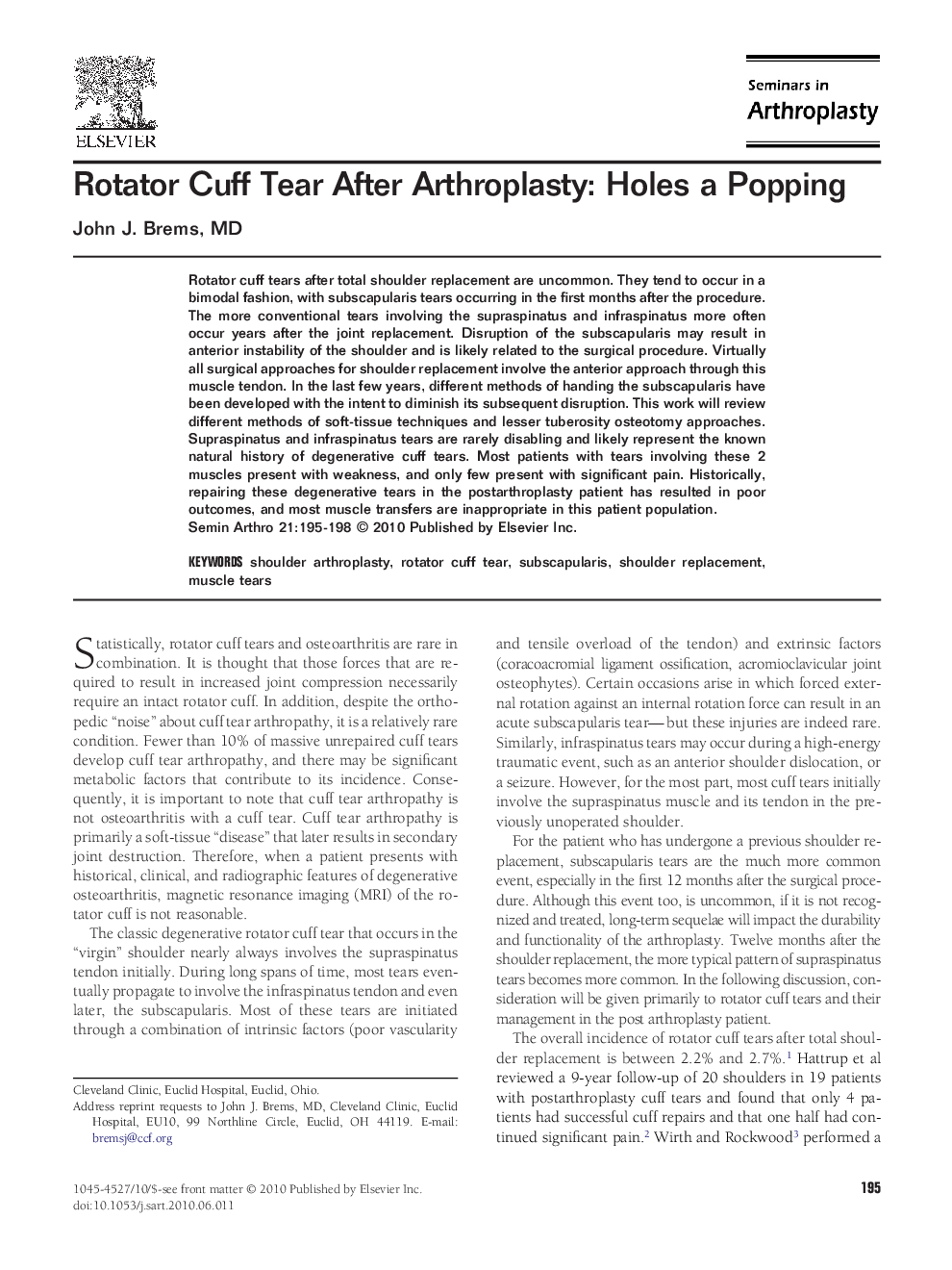| Article ID | Journal | Published Year | Pages | File Type |
|---|---|---|---|---|
| 4094049 | Seminars in Arthroplasty | 2010 | 4 Pages |
Rotator cuff tears after total shoulder replacement are uncommon. They tend to occur in a bimodal fashion, with subscapularis tears occurring in the first months after the procedure. The more conventional tears involving the supraspinatus and infraspinatus more often occur years after the joint replacement. Disruption of the subscapularis may result in anterior instability of the shoulder and is likely related to the surgical procedure. Virtually all surgical approaches for shoulder replacement involve the anterior approach through this muscle tendon. In the last few years, different methods of handing the subscapularis have been developed with the intent to diminish its subsequent disruption. This work will review different methods of soft-tissue techniques and lesser tuberosity osteotomy approaches. Supraspinatus and infraspinatus tears are rarely disabling and likely represent the known natural history of degenerative cuff tears. Most patients with tears involving these 2 muscles present with weakness, and only few present with significant pain. Historically, repairing these degenerative tears in the postarthroplasty patient has resulted in poor outcomes, and most muscle transfers are inappropriate in this patient population.
